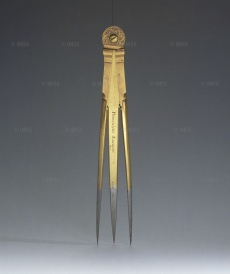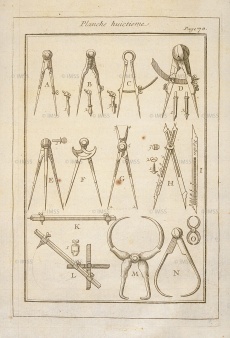Three-Point Compasses
From Inventions
Name probably used since the sixteenth century (documented in the inventory of Federico Cesi’s belongings).
Contents |
Historic Period
XVI secolo
Description
Compass used to reproduce drawings on the same scale, especially for mapmaking purposes. The instrument is formed of three legs that can open freely to mark the vertices of any triangle. Drawings were reproduced on the same scale by means of triangulation. The compass could also be used to construct a map from a terrestrial or celestial globe.
Bibliographical Resources
Inventario dei beni di Federico Cesi, Roma, Bibl. Lincea e Corsiniana, Archivio Linceo 32, cc. 84v-102v ("Compasso da tre punte scudi uno").
Nicolò, Anna; Solinas, Francesco. Per una analisi del collezionismo Linceo: L’Archivio Linceo 32 e il Museo di Federico Cesi, in Federico Cesi, Atti del Convegno (Acquasparta, 7-9 ottobre 1985) Roma, Accademia Nazionale dei Lincei, 1986, pp. 193-212, in part. pp. 206-212.
Existing Instruments
Florence, Museo Galileo. Institute and Museum of the History of Science, Inv. 1480.
Florence, Museo Galileo. Institute and Museum of the History of Science, Inv. 243, 244, 247.
Images
Author of the entry: Filippo Camerota


